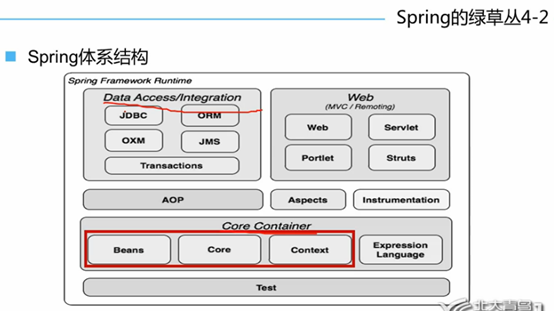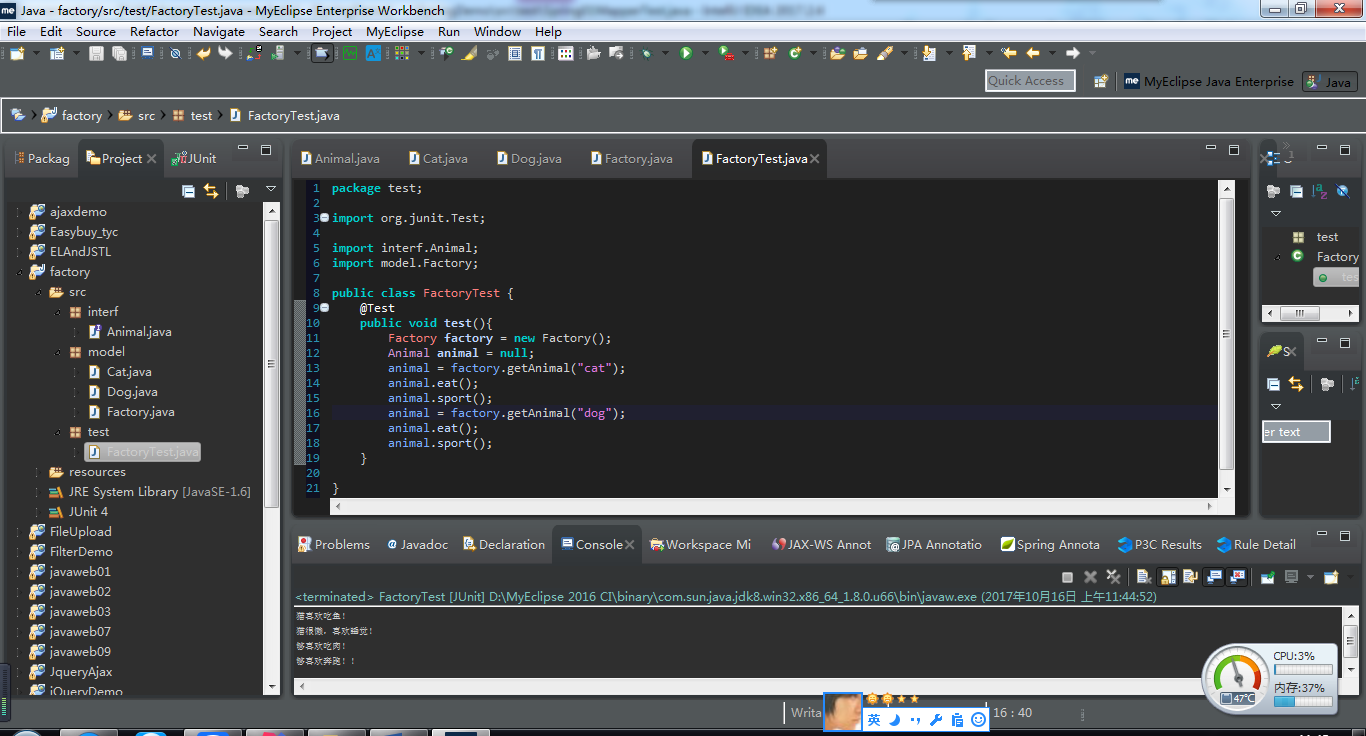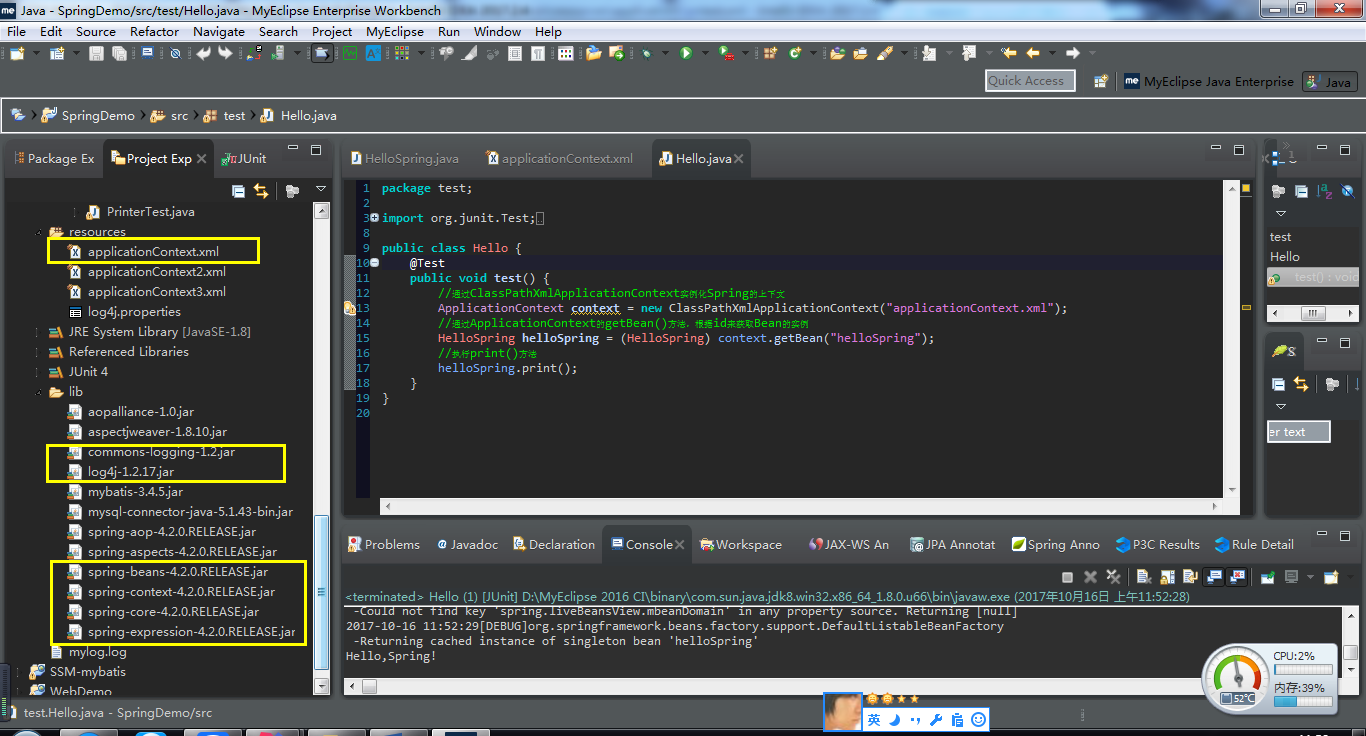一、Spring的优点
企业及系统:
1.大规模:用户数量多、数据规模大、功能众多
2.性能和安全要求高
3.业务复杂
4.灵活应变
Java技术:高入侵式依赖EJB技术框架-->Spring框架
优点:
轻量级框架,Java EE的春天
“一站式”的企业应用开发框架
*****
1.低侵入式设计
2.独立于各种应用服务器
3.依赖注入特性将组件关系透明化,降低了耦合度
4.面向切面编程特性允许将通用任务进行集中式处理
5.与第三方框架的良好整合
二、Spring的设计理念
使现有技术更加易用,推进编码最佳实践

三、Spring三个核心组件的作用

一、IoC容器
1.什么是控制反转?
将组件对象的控制权从代码本身转移到外部容器:
组件化的思想——分离关注点,使用接口,不再关注实现
目的:解耦合,只关注组件内部的事情
2.工厂模式
产品的规范
产品
工厂
客户端/调用
*****根据所需对象的描述,返回所需要的产品。

IoC注入实现控制反转:
步骤:
1.添加Spring到项目中

2.编写配置文件applicationContext.xml
1 <?xml version="1.0" encoding="UTF-8"?> 2 <beans xmlns="http://www.springframework.org/schema/beans" 3 xmlns:xsi="http://www.w3.org/2001/XMLSchema-instance" 4 xsi:schemaLocation="http://www.springframework.org/schema/beans 5 http://www.springframework.org/schema/beans/spring-beans.xsd"> 6 <!-- 通过bean元素声明需要Spring创建的实例。该实例的类型通过class属性指定, 7 并通过id属性为该实例指定一个名称,以便于访问 --> 8 <bean id="helloSpring" class="main.hello.HelloSpring"> 9 <!-- property元素用来为实例的属性赋值,此处实际是调用setWho()方法实现赋值操作 --> 10 <property name="who"> 11 <!-- 此处将字符串“Spring”赋值给who属性 --> 12 <value>Spring</value> 13 </property> 14 </bean> 15 </beans>
3.编写代码获取实例
1 public class HelloSpring { 2 //定义who属性,该属性的值将通过Spring框架进行设置 3 private String who = null; 4 5 public String getWho() { 6 return who; 7 } 8 9 public void setWho(String who) { 10 this.who = who; 11 } 12 /** 13 * 定义打印方法,输出一句完整的问候 14 */ 15 public void print(){ 16 System.out.println("Hello,"+this.getWho()+"!"); 17 } 18 }
1 @Test 2 public void test() { 3 //通过ClassPathXmlApplicationContext实例化Spring的上下文 4 ApplicationContext context = new ClassPathXmlApplicationContext("applicationContext.xml"); 5 //通过ApplicationContext的getBean()方法,根据id来获取Bean的实例 6 HelloSpring helloSpring = (HelloSpring) context.getBean("helloSpring"); 7 //执行print()方法 8 helloSpring.print(); 9 }